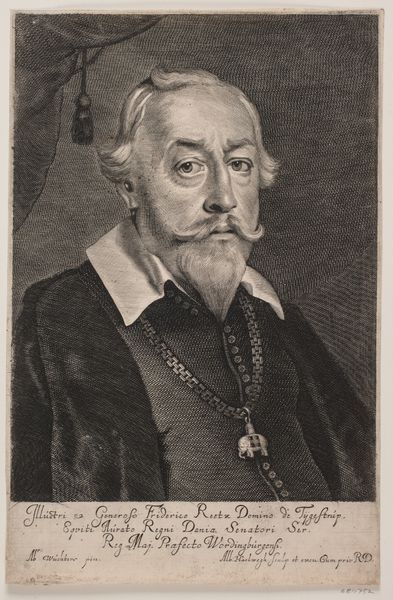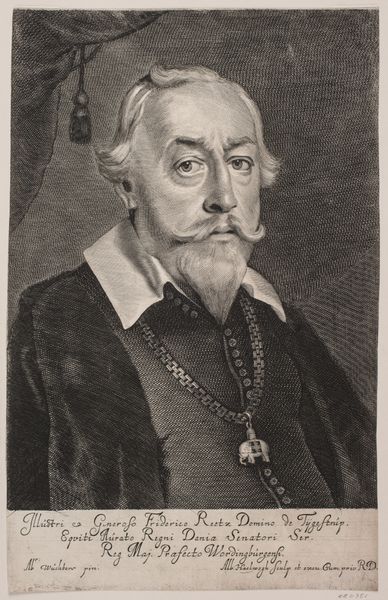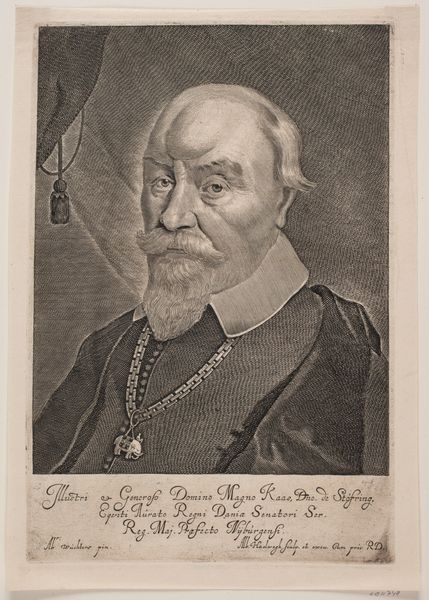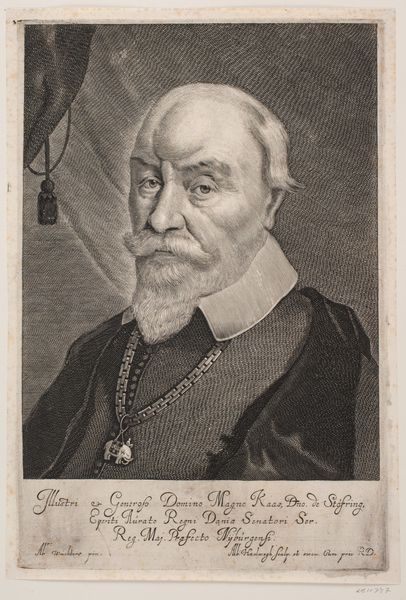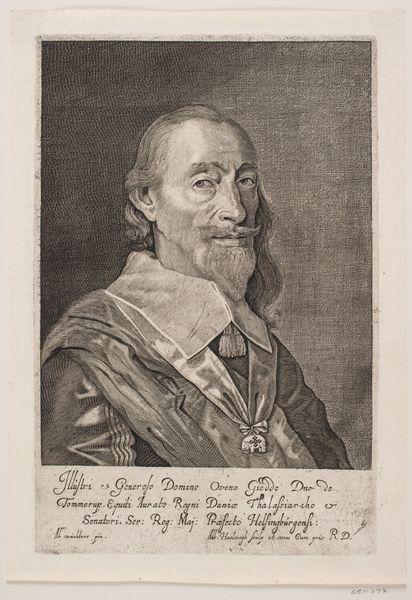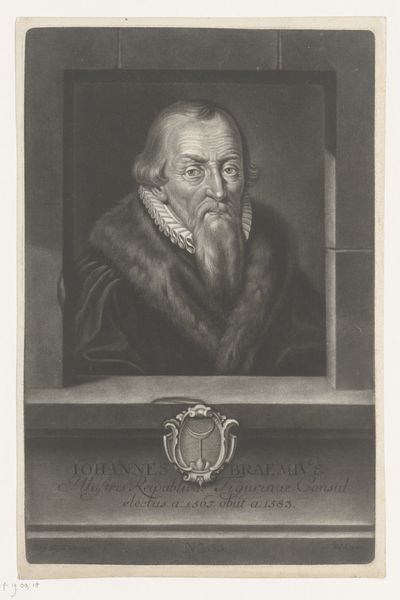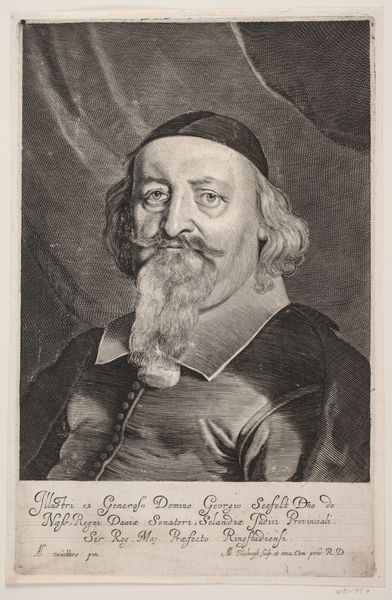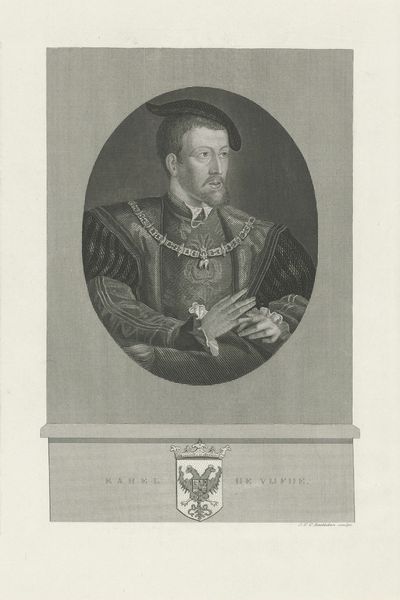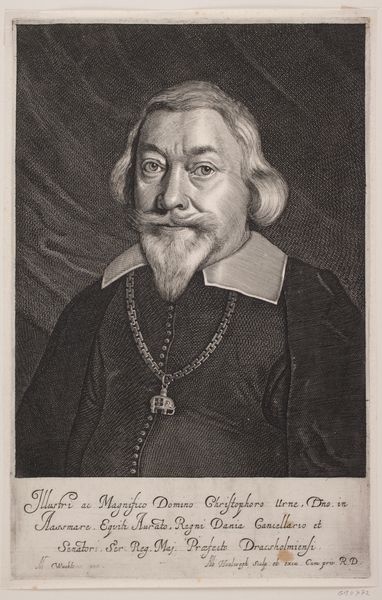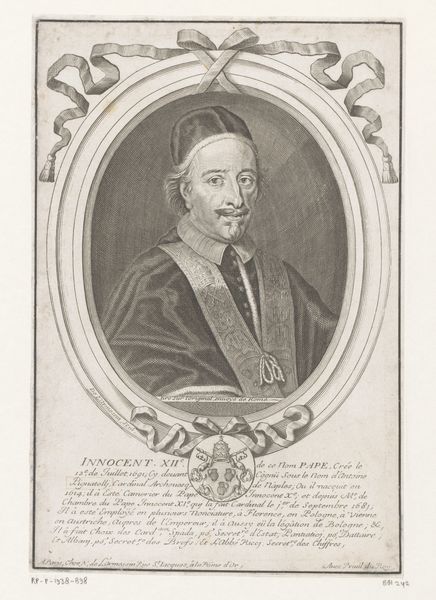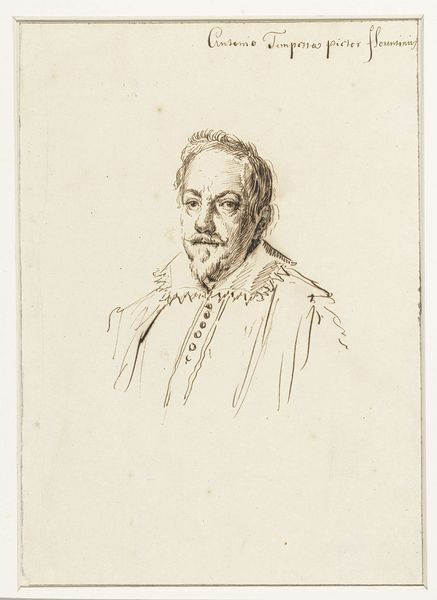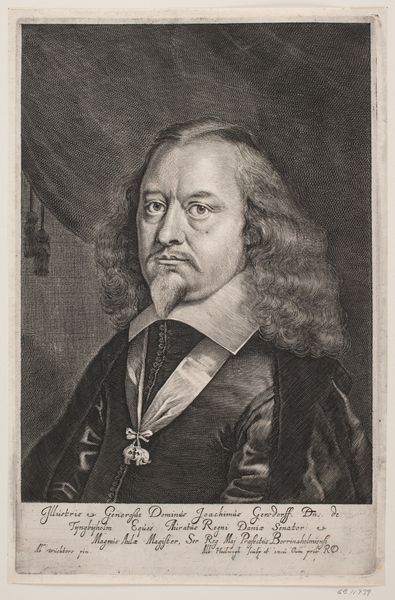
print, engraving
#
portrait
#
baroque
# print
#
engraving
Dimensions: 318 mm (height) x 209 mm (width) (plademaal)
Curator: This engraving presents a portrait of Frederik Reedtz, dating from around 1655 to 1659, and was crafted by Albert Haelwegh. What are your initial impressions? Editor: The immediate feel is one of formidable authority, almost intimidating. There’s a distinct lack of warmth in his expression; his eyes feel piercing. And the scale, for a print, enhances this sense of presence. Curator: Absolutely. The work itself provides insight into the subject’s place in society. Frederik Reedtz held significant positions—a senator in the Kingdom of Denmark and prefect of Vordingborg, if we can decipher the Latin inscription accurately. Such posts came with influence, power. This portrait was likely commissioned to reflect that status. The inclusion of the elephant pendant reflects royal favor too. Editor: It’s fascinating how these visual markers—the pendant, his meticulously styled beard, even the draped curtain—serve to construct and project an identity of unassailable power. And power relations. The elephant suggests ties to the Danish East India Company and royal power derived from colonial endeavors. What stories are erased to highlight that privilege? Curator: A crucial question. Haelwegh was a master of line, look at the way he uses hatching and cross-hatching to convey texture, the subtle shading to create volume and depth. Beyond simple representation, Haelwegh is interpreting Reedtz, presenting him for the world. But also reinforcing hierarchies. Editor: The gaze also establishes a dynamic between the viewer and the viewed. Reedtz is presented as superior, unwavering in his authority, and daring us to challenge him. Portraits are rarely neutral; they function within systems of control. Curator: And were frequently circulated for very political reasons. Prints such as these would spread an image far wider than any painting. The circulation of images has always been a vital ingredient in the power of imagery. Editor: This artwork reminds us that even what appears as a straightforward representation is always embedded in broader social and historical currents. Thank you for sharing, it definitely prompts further reflection about the power of images in that period. Curator: My pleasure, this detailed work really opens a lens to understand this person. It’s important for us to view art through a historical framework that considers society at the time.
Comments
No comments
Be the first to comment and join the conversation on the ultimate creative platform.
